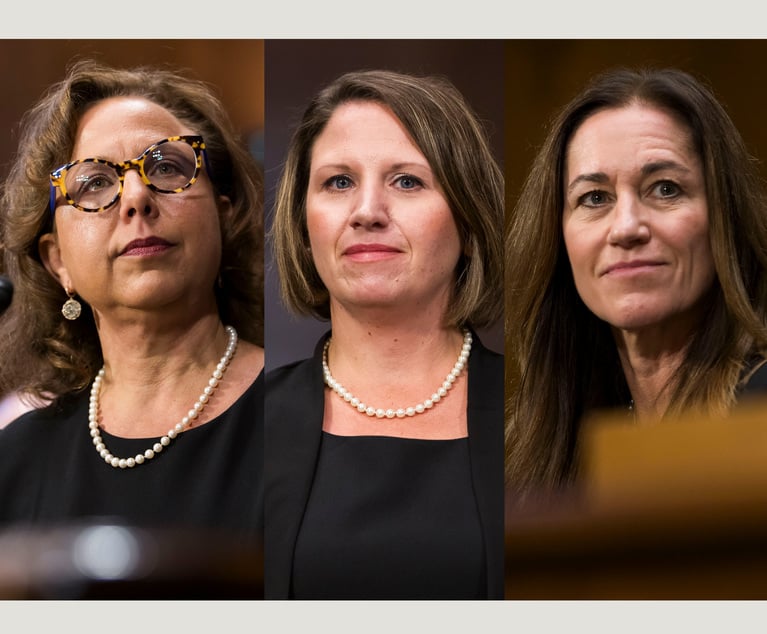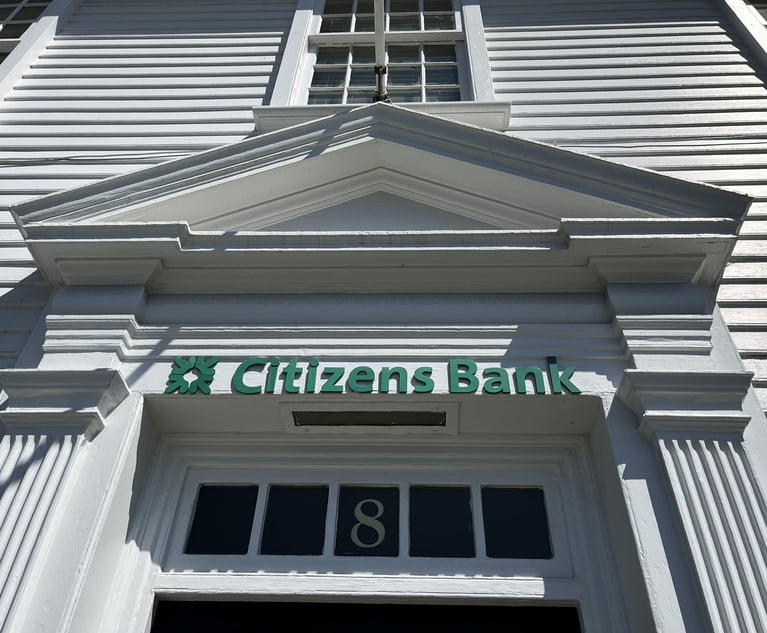The Municipal Cost Recovery Doctrine and Pa.'s Ongoing Opioid Crisis
As the number of municipalities filing lawsuits against pharmaceutical companies related to the ongoing opioid crisis continues to multiply, a quiet doctrine of Pennsylvania case law might undercut the ability of local governments to ultimately recover damages.
May 11, 2018 at 04:03 PM
8 minute read

As the number of municipalities filing lawsuits against pharmaceutical companies related to the ongoing opioid crisis continues to multiply, a quiet doctrine of Pennsylvania case law might undercut the ability of local governments to ultimately recover damages. At the very least, Pennsylvania courts will likely have to revisit their jurisprudence regarding the “municipal cost recovery doctrine” embodied in Pittsburgh v. Equitable Gas, 512 A.2d 83, 84 (Pa. Cmwlth. Ct. 1986) and Philadelphia v. Beretta U.S.A., 126 F. Supp. 2d 882, 894-95 (E.D. Pa. 2000).
The awful scope of the ongoing opioid crisis in Pennsylvania need not be overstated to shock: 4,642 overdose-related deaths were reported in the commonwealth during 2016, with 13 Pennsylvanians dying every single day. In Philadelphia, alone, there were 907 overdose-related deaths. Nationwide, drug overdose is now the leading cause of death for all Americans under the age of 50, with two-thirds of those deaths being directly attributable to opioids.
Beyond this terrible human cost, the resources of local municipalities are being severely taxed by a deluge of opioid-related emergencies that necessitate constant interventions from law enforcement and emergency medical personnel, as well as other expenditures of municipal resources (notably, naloxone-based medications used to counteract opioid overdoses). Analysis conducted in January 2018 by the American Enterprise Institute estimates that the opioid crisis has already cost the commonwealth approximately $23 billion in the aggregate (including losses in productivity), which breaks down to just shy of $1,800 per capita (or 3.21 percent of Pennsylvania's gross domestic product).
Prescription opioids (oxycodone, hydrocodone, etc.) have accounted for approximately 25 percent of the fatal incidents described above, and have also been at the root of innumerable other, nonfatal incidents requiring municipal intervention. As such, it would seem inevitable that Pennsylvania municipalities would seek to recoup such outsized expenses directly from the alleged tortfeasors—and, indeed, they have done precisely that. The current tally of civil actions is unclear, but at least a dozen Pennsylvania cities and counties have already brought claims alleging that pharmaceutical companies like Purdue, Endo and Teva should bear some culpability for the financial hardships detailed above.
The real question, however, is whether such financial recoveries will ultimately be possible.
The “municipal cost recovery rule” (also termed the “free public services doctrine”) is a precedential quirk of tort law regarding the availability of damages in the context of claims made by governmental units. The policy has arguable analogues in a small number of venerable state and federal opinions regarding the unavailability of damages when governments seek to collect damages related to, for example, the incarceration of criminals, see, e.g., Napa State Hospital v. Yuba County, 71 P. 450, 452 (Cal. 1903), recapturing an escaped convict, see, State Highway & Public Works Commission v. Cobb, 2 S.E.2d 565, 566-67 (N.C. 1939), providing health care and lost wages to a soldier injured by a private corporation, see, e.g., United States v. Standard Oil of California, 332 U.S. 301, 314 (1947), and industrial fire suppression. See, e.g., Bridgeton v. B.P. Oil, 369 A.2d 49, 54-55 (N.J. Super. Ct. 1976).
One common theme that emerges from these early cases is that a government suing a private entity must have a recognized property interest in order to recover damages. The mere violation of a government's “sovereignty” that results from the transgressions of a tortfeasor are insufficient to provide an independent basis for financial recovery. The North Carolina Supreme Court in Cobb provided this apt summation: “The state constitutes a sort of intangible sovereignty. Legally speaking, it cannot be assaulted, slandered, or injured as an individual with respect to a personality that it does not possess. But it does own property and has property rights which might be the subject of invasion. If a wrong is committed against it in the nature of a tort, it must be with respect to such a right.”
Beyond the absence of a vested property interest (or an explicit statutory remedy), much of the rationale for these holdings is also grounded in the understanding that governments have already levied taxes to provide services to the public at large, and allowing municipalities to seek additional “funding” via litigation treads upon the legislature's role in holding the proverbial purse strings. In Standard Oil, the U.S. Supreme Court was persuaded by the necessity of such separation of powers: “The exercise of judicial power to establish the new liability not only would be intruding within a field properly within Congress' control and as to a matter concerning which it has seen fit to take no action … But also would involve a possible element of surprise, in view of the settled contrary practice.”
Stated more simply, municipalities that voluntarily elect to provide certain public services may be financially “on-the-hook” for the related costs, irrespective of intervening tortious conduct by a private actor. The U.S. Court of Appeals for the Ninth Circuit in Flagstaff v. Atchison, Topeka and Santa Fe Railway, 719 F.2d 322, 323 (9th Cir. 1983) explained: “The costs of public services for protection from fire or safety hazards is to be borne by the public as a whole, not assessed against the tortfeasor whose negligence creates the need for the service … Where such services are provided by the government and the costs are spread by taxes, the tortfeasor does not expect a demand for reimbursement.”
The municipal cost recovery doctrine is not absolute. In fact, the Ninth Circuit's ruling in Flagstaff carves out two explicit exceptions: where recovery is “authorized by statute or regulation;” and where “the acts of a private party create a public nuisance which the government seeks to abate.” Thus, while tortious damages resulting from merely negligent behavior would be unavailable, claims that rise to the level of a “public nuisance” may remain actionable. See, e.g., Evansville v. Kentucky Liquid Recylcing, 604 F.2d 1008 (7th Cir. 1979) (permitting recovery for expenses in cleaning up ground water pollution); Town of East Troy v. Soo Line Railroad, 653 F.2d 1123 (7th Cir. 1980) (same).
Many (if not all) of the Pennsylvania municipal plaintiffs are pursuing some claims against the opioid pharmaceutical companies sounding in public nuisance. Yet, the applicability of this exception under Pennsylvania law remains unclear. The holding in Equitable Gas, unequivocally states that “the cost of public services for protection from a safety hazard is to be borne by the public as a whole, not assessed against a tortfeasor whose negligence creates the need for the service.”
The U.S. District Court for the Eastern District of Pennsylvania took up this precedent in Beretta to reach a similar conclusion regarding claims concerning gun manufacturers' distribution of firearms: “The city routinely provides police and law enforcement to protect its citizens from criminal who use guns and some health services to victims … These unquestionably are municipal costs which cannot be recovered.” The holding in Beretta acknowledged the existence of the exception, as argued by the city of Philadelphia. However, a since-invalidated statutory provision prohibiting such lawsuits against the gun industry by aggrieved municipalities forestalled the district court in Beretta from reaching a definitive conclusion regarding the applicability of the public nuisance exception to the municipal cost recovery doctrine.
As such, the applicability of the public nuisance exception grounded in Flagstaff (and its antecedents) remains something of an open question in Pennsylvania.
In addressing this issue, Pennsylvania jurists will be forced to contend with considerations regarding the propriety of permitting municipal recovery in these contexts. Modern scholarship reveals marked questions regarding the relative wisdom of perpetuating the municipal cost recovery doctrine, see, Timothy D. Lytton, “Should Government Be Allowed to Recover the Costs of Public Services from Tortfeasors?: Tort Subsidies, the Limits of Loss Spreading, and the Free Public Services Doctrine,” 76 Tulane L. Rev. 727, 730 (2002) (“The doctrine shields industrial tortfeasors from liability for cleanup costs, passing those costs on to the public. It constitutes a tort subsidy to industry and functions as an insurance scheme for industrial accidents paid for by taxpayers).
There is also a suggestion in the analogous case law that factual exigencies can color such determinations, as in United States v. Chesapeake & Ohio Railway, 130 F.2d 308 (4th Cir. 1942) (recovery for fire suppression expenses permitted where related to a national forest); Commission v. General Public Utilities., 710 F.2d 117, 121-23 (3d Cir. 1983) (allowing governmental claims for recovery of damages resulting from the Three Mile Island nuclear disaster).
Given the diversity of the municipal plaintiffs in the pending opioid lawsuits, it is difficult to predict a uniform result. In the absence of a clear adoption of the “public nuisance exception” by a competent Pennsylvania court (or of a statutory authorization), the right of recovery in these cases may be difficult to predict.
Clay Flaherty is an associate in Anapol Weiss' class action practice group. He can be reached at [email protected] and 215-735-1130.
This content has been archived. It is available through our partners, LexisNexis® and Bloomberg Law.
To view this content, please continue to their sites.
Not a Lexis Subscriber?
Subscribe Now
Not a Bloomberg Law Subscriber?
Subscribe Now
NOT FOR REPRINT
© 2025 ALM Global, LLC, All Rights Reserved. Request academic re-use from www.copyright.com. All other uses, submit a request to [email protected]. For more information visit Asset & Logo Licensing.
You Might Like
View All
Pa. Federal District Courts Reach Full Complement Following Latest Confirmation

The Defense Bar Is Feeling the Strain: Busy Med Mal Trial Schedules Might Be Phila.'s 'New Normal'
7 minute read
Federal Judge Allows Elderly Woman's Consumer Protection Suit to Proceed Against Citizens Bank
5 minute read
Judge Leaves Statute of Limitations Question in Injury Crash Suit for a Jury
4 minute readTrending Stories
- 1Selendy Gay Files Lawsuit Challenging Trump's Workforce Reclassification EO
- 2Trump's DOJ Withdraws Opposition to Law Banning Trans Care for Minors
- 3Perkins Coie Backs Challenge to Trump's Ban on Transgender Military Service
- 4New Charges Expected in Sex Trafficking Case Against Broker Brothers
- 5With AI, What Changes Can Midsize Firms Expect?
Who Got The Work
J. Brugh Lower of Gibbons has entered an appearance for industrial equipment supplier Devco Corporation in a pending trademark infringement lawsuit. The suit, accusing the defendant of selling knock-off Graco products, was filed Dec. 18 in New Jersey District Court by Rivkin Radler on behalf of Graco Inc. and Graco Minnesota. The case, assigned to U.S. District Judge Zahid N. Quraishi, is 3:24-cv-11294, Graco Inc. et al v. Devco Corporation.
Who Got The Work
Rebecca Maller-Stein and Kent A. Yalowitz of Arnold & Porter Kaye Scholer have entered their appearances for Hanaco Venture Capital and its executives, Lior Prosor and David Frankel, in a pending securities lawsuit. The action, filed on Dec. 24 in New York Southern District Court by Zell, Aron & Co. on behalf of Goldeneye Advisors, accuses the defendants of negligently and fraudulently managing the plaintiff's $1 million investment. The case, assigned to U.S. District Judge Vernon S. Broderick, is 1:24-cv-09918, Goldeneye Advisors, LLC v. Hanaco Venture Capital, Ltd. et al.
Who Got The Work
Attorneys from A&O Shearman has stepped in as defense counsel for Toronto-Dominion Bank and other defendants in a pending securities class action. The suit, filed Dec. 11 in New York Southern District Court by Bleichmar Fonti & Auld, accuses the defendants of concealing the bank's 'pervasive' deficiencies in regards to its compliance with the Bank Secrecy Act and the quality of its anti-money laundering controls. The case, assigned to U.S. District Judge Arun Subramanian, is 1:24-cv-09445, Gonzalez v. The Toronto-Dominion Bank et al.
Who Got The Work
Crown Castle International, a Pennsylvania company providing shared communications infrastructure, has turned to Luke D. Wolf of Gordon Rees Scully Mansukhani to fend off a pending breach-of-contract lawsuit. The court action, filed Nov. 25 in Michigan Eastern District Court by Hooper Hathaway PC on behalf of The Town Residences LLC, accuses Crown Castle of failing to transfer approximately $30,000 in utility payments from T-Mobile in breach of a roof-top lease and assignment agreement. The case, assigned to U.S. District Judge Susan K. Declercq, is 2:24-cv-13131, The Town Residences LLC v. T-Mobile US, Inc. et al.
Who Got The Work
Wilfred P. Coronato and Daniel M. Schwartz of McCarter & English have stepped in as defense counsel to Electrolux Home Products Inc. in a pending product liability lawsuit. The court action, filed Nov. 26 in New York Eastern District Court by Poulos Lopiccolo PC and Nagel Rice LLP on behalf of David Stern, alleges that the defendant's refrigerators’ drawers and shelving repeatedly break and fall apart within months after purchase. The case, assigned to U.S. District Judge Joan M. Azrack, is 2:24-cv-08204, Stern v. Electrolux Home Products, Inc.
Featured Firms
Law Offices of Gary Martin Hays & Associates, P.C.
(470) 294-1674
Law Offices of Mark E. Salomone
(857) 444-6468
Smith & Hassler
(713) 739-1250





